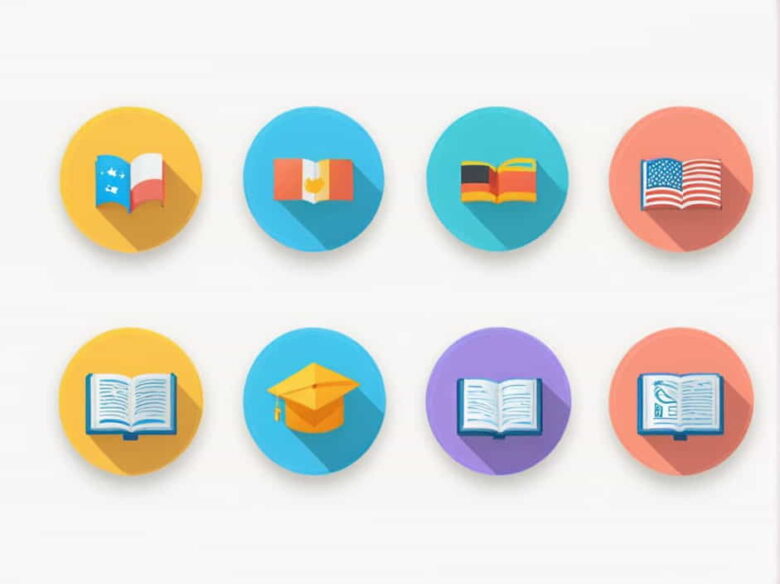Multilingualism is becoming increasingly common in classrooms worldwide due to globalization, migration, and cultural diversity. Instead of seeing multiple languages as a challenge, educators can leverage multilingualism as a powerful educational resource to enhance learning, cognitive development, and cultural awareness.
This content explores the benefits of multilingualism in education and provides practical strategies for integrating multiple languages into the classroom.
The Benefits of Multilingualism in Education
1. Cognitive Advantages of Multilingual Students
Research shows that multilingual students often develop stronger cognitive skills, including:
? Enhanced problem-solving abilities Multilingual individuals can switch between languages, making them more adaptable in different learning situations.
? Improved memory and focus Learning multiple languages strengthens memory and helps students retain information more effectively.
? Greater creativity Exposure to different languages encourages students to think outside the box and develop innovative solutions.
By embracing multilingualism, teachers can help students sharpen their cognitive skills and boost academic performance.
2. Social and Cultural Awareness
Multilingualism fosters cultural understanding and empathy, allowing students to:
? Appreciate different perspectives and traditions
? Develop better communication skills in a diverse environment
? Reduce prejudice and stereotypes by understanding different languages and cultures
A multilingual classroom promotes inclusivity and strengthens social connections among students from diverse backgrounds.
3. Academic Benefits and Language Skills Development
? Better reading comprehension Students who speak multiple languages often have stronger literacy skills.
? Improved writing abilities Exposure to different language structures enhances writing proficiency in all languages.
? Greater adaptability to learning new languages Once students become multilingual, they find it easier to learn additional languages.
By encouraging multilingualism, educators help students excel in multiple subjects while preparing them for future career opportunities in a globalized world.
Practical Strategies for Using Multilingualism in the Classroom
1. Code-Switching as a Learning Tool
Code-switching the practice of alternating between two or more languages can be used effectively in the classroom. Teachers can:
? Allow students to express ideas in their home language first before translating into the classroom language.
? Encourage bilingual discussions, helping students connect prior knowledge with new concepts.
? Use code-switching for difficult subjects, making complex topics easier to understand.
This approach helps boost confidence in multilingual students and reinforces understanding in both languages.
2. Bilingual Teaching Materials
Providing students with bilingual resources can improve their comprehension and engagement. Some effective materials include:
? Books in multiple languages Students can compare translations to understand different linguistic structures.
? Multilingual dictionaries and glossaries These tools help students expand vocabulary in both languages.
? Educational videos with subtitles Subtitled content reinforces language learning and improves listening skills.
Using bilingual materials supports literacy development while encouraging students to maintain their home language skills.
3. Peer Language Support and Group Work
Encouraging multilingual students to work together can create a collaborative learning environment. Teachers can:
? Pair students who speak the same language to support each other in learning activities.
? Organize group projects where students can present ideas in multiple languages.
? Encourage language buddies, where native speakers help peers improve their language skills.
This approach boosts student engagement and ensures that multilingual learners feel valued and included.
4. Multilingual Labeling and Classroom Environment
Creating a multilingual classroom environment helps students feel comfortable using different languages. Teachers can:
? Label classroom objects in multiple languages to improve vocabulary retention.
? Display multilingual posters and charts that showcase different writing systems.
? Encourage students to create bilingual or multilingual projects to showcase their skills.
A visually inclusive classroom fosters a sense of belonging and makes learning more interactive and engaging.
5. Encouraging Parents to Support Multilingualism
Parents play a crucial role in reinforcing language learning at home. Teachers can:
? Encourage parents to read books and tell stories in their native language.
? Provide bilingual homework instructions to involve parents in their childs learning process.
? Organize multicultural events where families can share their language and traditions.
This collaboration strengthens language development and ensures that students continue practicing both home and school languages.
Overcoming Challenges in a Multilingual Classroom
While multilingualism offers numerous benefits, some challenges need to be addressed:
1. Balancing Multiple Languages Without Causing Confusion
? Establish clear language-use guidelines in the classroom.
? Assign specific activities where students can use both their home language and the classroom language.
? Use gradual language transitions, allowing students to develop proficiency at their own pace.
2. Addressing Language Barriers
? Use visual aids and gestures to support understanding.
? Provide extra language support for students who need help catching up.
? Foster a positive attitude towards language diversity, so students feel confident using multiple languages.
3. Training Teachers for Multilingual Education
? Provide professional development on language acquisition strategies.
? Encourage teachers to learn basic phrases in their students’ home languages.
? Introduce technology tools, such as translation apps, to assist in communication.
By equipping teachers with the right skills, schools can create an inclusive learning environment for multilingual students.
The Role of Technology in Supporting Multilingual Learning
Technology has made it easier to integrate multiple languages into education. Some useful tools include:
? Translation apps Google Translate, Duolingo, and other apps help students learn and practice different languages.
? Multilingual audiobooks and podcasts These resources improve listening and comprehension skills.
? Online bilingual courses Websites and e-learning platforms offer interactive language lessons.
By using technology, educators can personalize learning experiences and help students develop their multilingual skills more effectively.
The Long-Term Benefits of Embracing Multilingualism in Education
Encouraging multilingualism in the classroom has lasting benefits for students, including:
? Better career opportunities Multilingual individuals have an advantage in international job markets.
? Stronger academic performance Learning multiple languages improves critical thinking and literacy skills.
? Enhanced communication skills Multilingual students are more adaptable and confident in different social settings.
By integrating multilingual strategies into education, schools can empower students for success in an increasingly globalized world.
Multilingualism is a valuable resource in the classroom that can improve cognitive abilities, academic performance, and social skills. By using bilingual teaching materials, peer language support, multilingual labeling, and technology, educators can create an inclusive and dynamic learning environment.
Embracing multilingualism prepares students for a globalized future, enhances cultural understanding, and promotes educational success. Instead of seeing multiple languages as a barrier, schools should view them as an opportunity for growth and enrichment.



